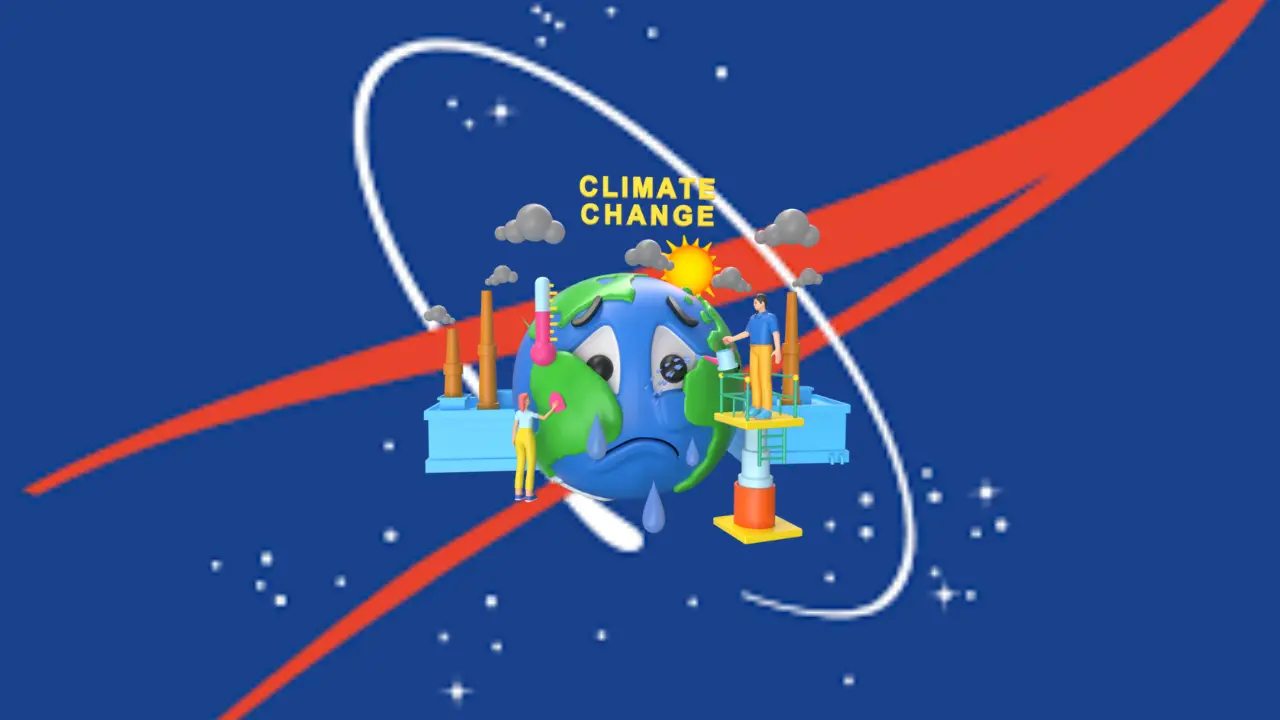NASA scientists have taken on the vital duty of creating creative ways to minimize the effects of global warming as the global climate catastrophe continues to worsen. The goal of the Earth Science Division of NASA is to generate reliable climate data that will drive practical solutions to the problem of climate change. To achieve this goal, the Earth Science Division will monitor the effects of heatwaves and wildfires, predict temperatures that will break records, and leverage cutting-edge technologies. NASA is working to conserve species on land and in the sea, as well as the well-being of humans, with a sense of urgency surrounding the imminent need to take action regarding climate change. This work is being done not only for the well-being of humanity.
Monitoring Heatwaves and Wildfires
Adapting to the worsening heatwaves and catastrophic wildfires that are becoming more frequent as a result of climate change is one of the most important issues. NASA scientists have been keeping a close eye on these occurrences in order to gain a deeper understanding of the patterns they follow and the factors that contribute to them. The agency is able to observe the scale and effects of wildfires thanks to the deployment of cutting-edge satellites, which enables a reaction mechanism that is both more effective and more prompt. This improved monitoring helps not just to mitigate the immediate effects of wildfires but also to develop solutions that can be used to prevent wildfires in the future.
Forecasting Temperatures That Will Break Records
The United States National Aeronautics and Space Administration (NASA) has been at the forefront of climate modeling and prediction despite the unabated rise in average world temperatures. Their in-depth studies and meticulous examination of the data have brought them to a terrifying conclusion: the month of July is likely going to break all records for temperature. These terrifying forecasts highlight the critical importance of taking prompt action to combat the effects of climate change. The climate models developed by NASA provide scientists and policymakers with essential tools for the development of effective responses to this urgent problem.
Utilization of Artificial Intelligence in the Analysis of Climate Data
It is impossible to exaggerate how vital it is to have uncorrupted and reliable data on the climate. In order to achieve this goal, the Earth Science Division of NASA is embracing cutting-edge technology such as artificial intelligence and deep learning in order to improve the precision of data. The organization is able to efficiently collect, handle, and analyze massive volumes of data because it makes use of these cutting-edge tools. This combination of AI and deep learning improves the accuracy of climate data, which in turn enables more informed decisions to be made regarding how to successfully combat climate change.
Gavin’s Warning and the Urgency of Climate Action
Gavin, a well-known climate specialist, has given a dire warning, stating that 2023 has a good chance of becoming the hottest year on record. This cautionary remark emphasizes how urgently we must take immediate action to combat the climate issue. Along with a number of other climate organizations, NASA underlines how important it is to tackle the issue of climate change head-on. If strong and prompt action is not taken, the consequences of global warming will grow much more severe, having an impact not just on human life but also on biodiversity and ecosystems all over the world.
Protecting the Environment for All
The dedication of NASA to addressing the climate catastrophe goes well beyond the protection of human welfare. The agency is aware of the impact that rising CO2 levels have had, not just on land ecosystems but also on marine ecosystems. The rise in ocean acidity, which is caused by an increase in the amount of carbon dioxide in the atmosphere, presents a significant risk to marine life. Through a better knowledge of these interrelationships, NASA hopes to be able to design holistic solutions that will not only protect mankind but also the natural environment.
Technologies that Reduce Carbon Footprints for Air Travel
NASA is committed to creating environmentally friendly technology for the aviation industry in light of the considerable contribution that the aviation industry makes to greenhouse gas emissions. This involves the investigation of completely electric aircraft as well as the development of improvements to reduce the amount of fuel used in commercial aviation. The agency’s goal is to reduce the carbon footprint of air travel as part of its fight against climate change. To do so, they are actively researching and developing environmentally friendly substitutes.
Collaboration for Effective Solutions
The United States Space Agency (NASA) recognizes that addressing the climate catastrophe would need coordinated efforts from a variety of entities working together. In order to accomplish this goal, the agency collaborates with other organizations, such as FEMA and NOAA, to determine the most pressing requirements of society in regard to solutions that may be implemented for climate change. They are able to establish comprehensive solutions to address the many different concerns posed by global warming if they collaborate with one another.
Conclusion
The pioneering role that NASA plays in the fight for a sustainable future is highlighted by the agency’s commitment to the fight against climate change through innovative research, technological improvements, and collaboration. The National Aeronautics and Space Administration (NASA) is actively working to reduce the negative consequences of global warming by putting an emphasis on the collection of precise climate data and the deployment of innovative green technology. NASA’s efforts serve as a beacon of hope for humanity and the environment alike, helping to pave the way toward a society that is greener and more resilient as the need of taking action to address climate change becomes increasingly obvious.
![]()
